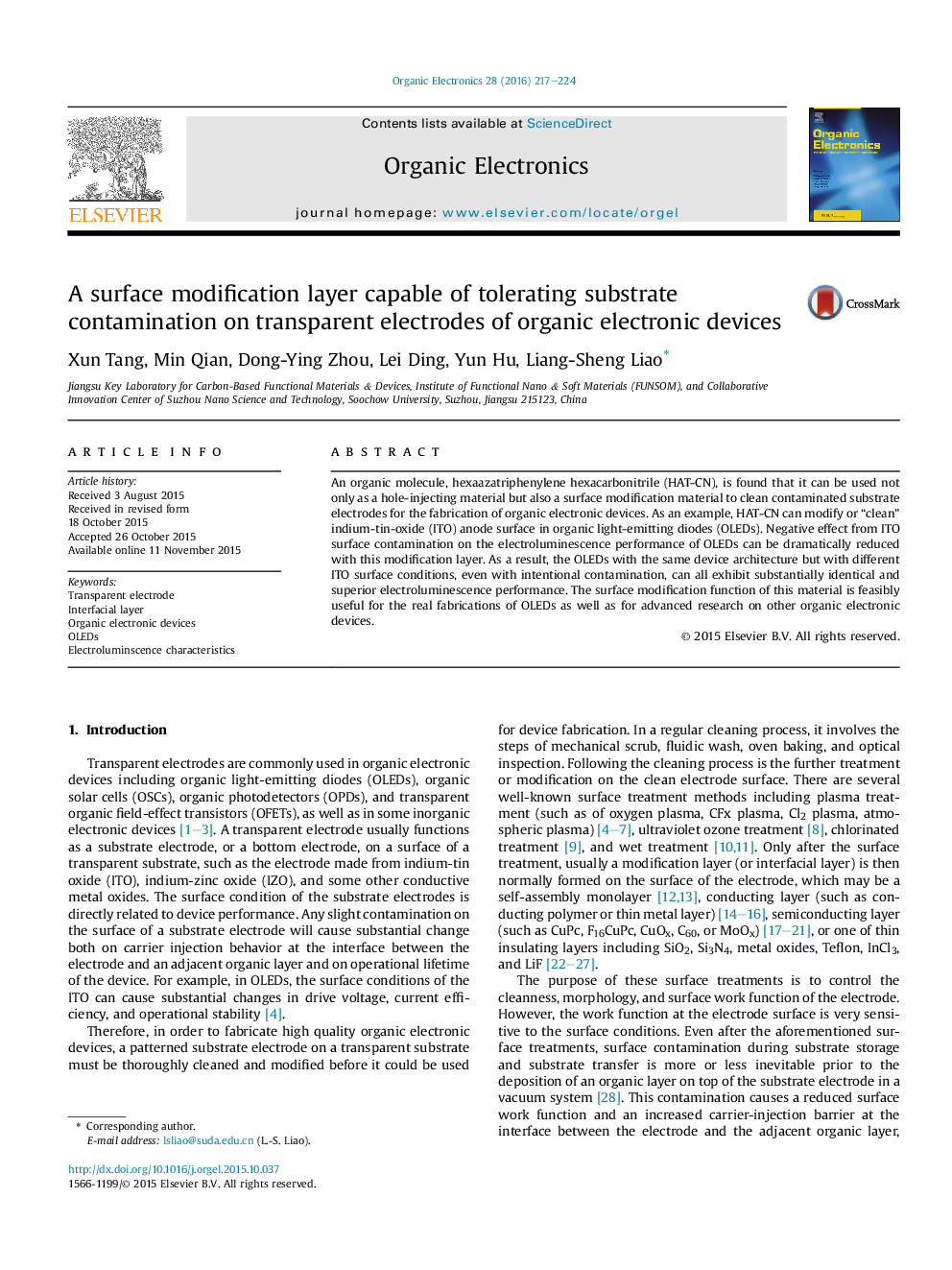| کد مقاله | کد نشریه | سال انتشار | مقاله انگلیسی | نسخه تمام متن |
|---|---|---|---|---|
| 1267136 | 1496829 | 2016 | 8 صفحه PDF | دانلود رایگان |
• A modification layer is used to oxidize surface contaminants on electrodes.
• “Dirty” substrate with the modification layer is useful to make electronic devices.
• High-performance organic light-emitting diodes can be fabricated using the layer.
An organic molecule, hexaazatriphenylene hexacarbonitrile (HAT-CN), is found that it can be used not only as a hole-injecting material but also a surface modification material to clean contaminated substrate electrodes for the fabrication of organic electronic devices. As an example, HAT-CN can modify or “clean” indium-tin-oxide (ITO) anode surface in organic light-emitting diodes (OLEDs). Negative effect from ITO surface contamination on the electroluminescence performance of OLEDs can be dramatically reduced with this modification layer. As a result, the OLEDs with the same device architecture but with different ITO surface conditions, even with intentional contamination, can all exhibit substantially identical and superior electroluminescence performance. The surface modification function of this material is feasibly useful for the real fabrications of OLEDs as well as for advanced research on other organic electronic devices.
An organic modification layer, which is capable of modifying or “cleaning” the surface of a substrate electrode due to its strong oxidizing property, may let people use “dirty” substrate without going through a painful and time-consuming cleaning process to fabricate high performance organic electronic devices. Taking organic light-emitting diodes (OLEDs) as example, no matter the substrate electrodes are contaminated or not (i.e. with quite different surface conditions), the electroluminescent characteristics from the OLEDs are almost identical and superior if a “cleaning” layer is formed on the substrate electrodes.Figure optionsDownload as PowerPoint slide
Journal: Organic Electronics - Volume 28, January 2016, Pages 217–224
